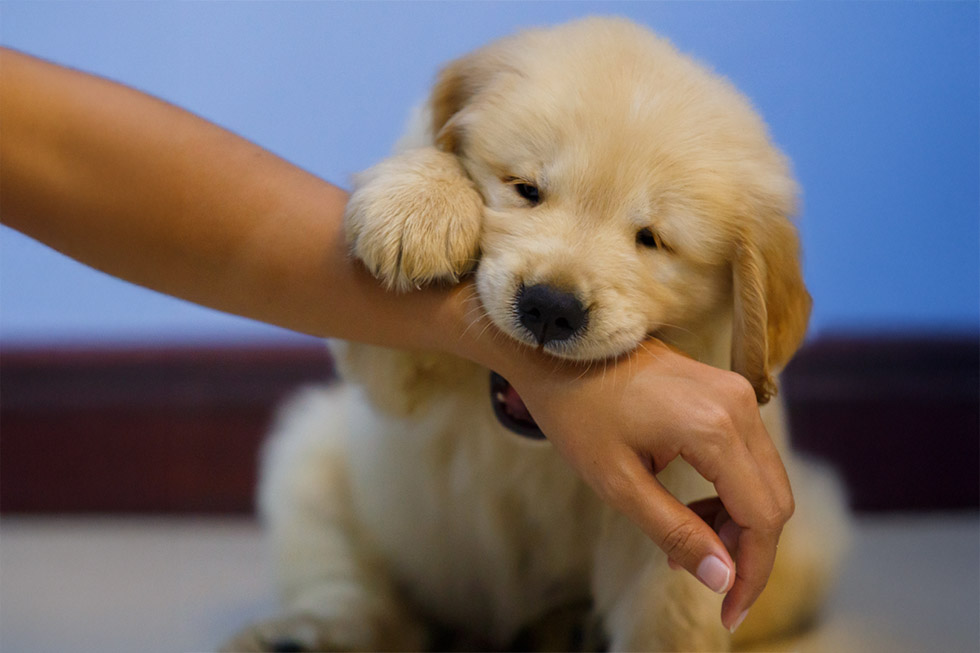
How to Teach Your Puppy to Stop Biting: A Step-by-Step Guide
Puppy teeth may be tiny, but those little nips can cause significant problems! Not to mention how well those razor-sharp teeth can certainly leave a mark. Whether your pup is teething, playing, or testing boundaries, biting is a common behaviour that needs correcting early. In this step-by-step guide, Pet Insurance Australia will walk you through the most effective and gentle ways to teach your puppy that teeth are for chewing toys, not human hands (or ears).
Why Do Puppies Bite?
Puppies explore the world with their mouths. Biting is part of learning, playing, and relieving teething discomfort. However, if not addressed, puppy nipping and rough biting can lead to ongoing behavioural issues or injury.
It’s important to remember that when your puppy arrives home, they are testing to see if you are one of their littermates, or mum/dad. Littermates happily chew and bite at each other, while mum and dad will not tolerate too much rough play. Also, understanding that during littermate play sessions, if one puppy becomes too rough, the other pup will typically yelp and stop playing. These interactions teach your puppy essential lessons on how to interact with those around them.
Sadly, many first-time puppy owners don’t understand the importance of not allowing their puppies to bite until they are much older. What can seemingly be seen as innocent puppy behaviour can cause many problems as your dog quickly grows.
The general rule of thumb is: any behaviour you deem unacceptable in a grown dog should also be discouraged in the early weeks of puppyhood.
Many dog experts will advise that teeth-on-skin contact is a no-go with any breed or size. The good news? With patience and consistency, puppy biting can be easily and quickly managed!

Alt text: Infographic by Pet Insurance Australia titled “4 Steps to Stop Your Puppy From Biting.” Step 1: Understand the cause of biting. Step 2: Use the “Ouch!” technique by stopping play. Step 3: Redirect the biting with toys. Step 4: Encourage calm play through low-energy activities and treats.
Step-by-Step: How to Stop Puppy Biting
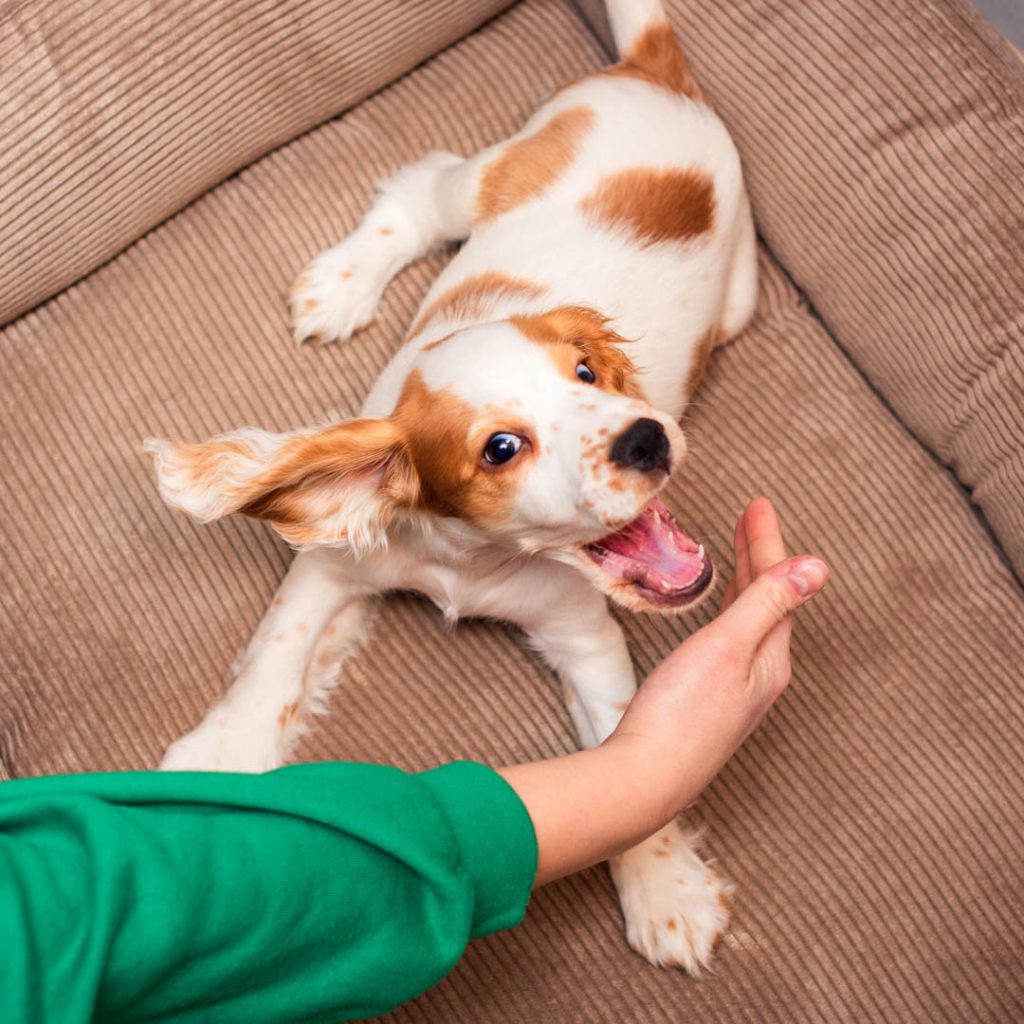
Step 1: Understand the Cause
Before you can correct the behaviour, identify why your puppy is biting:
- Teething discomfort? (usually 3–6 months of age)
- Overexcitement during play?
- Seeking attention?
- Lack of boundaries or training?
Understanding the reason will help you tailor your approach.
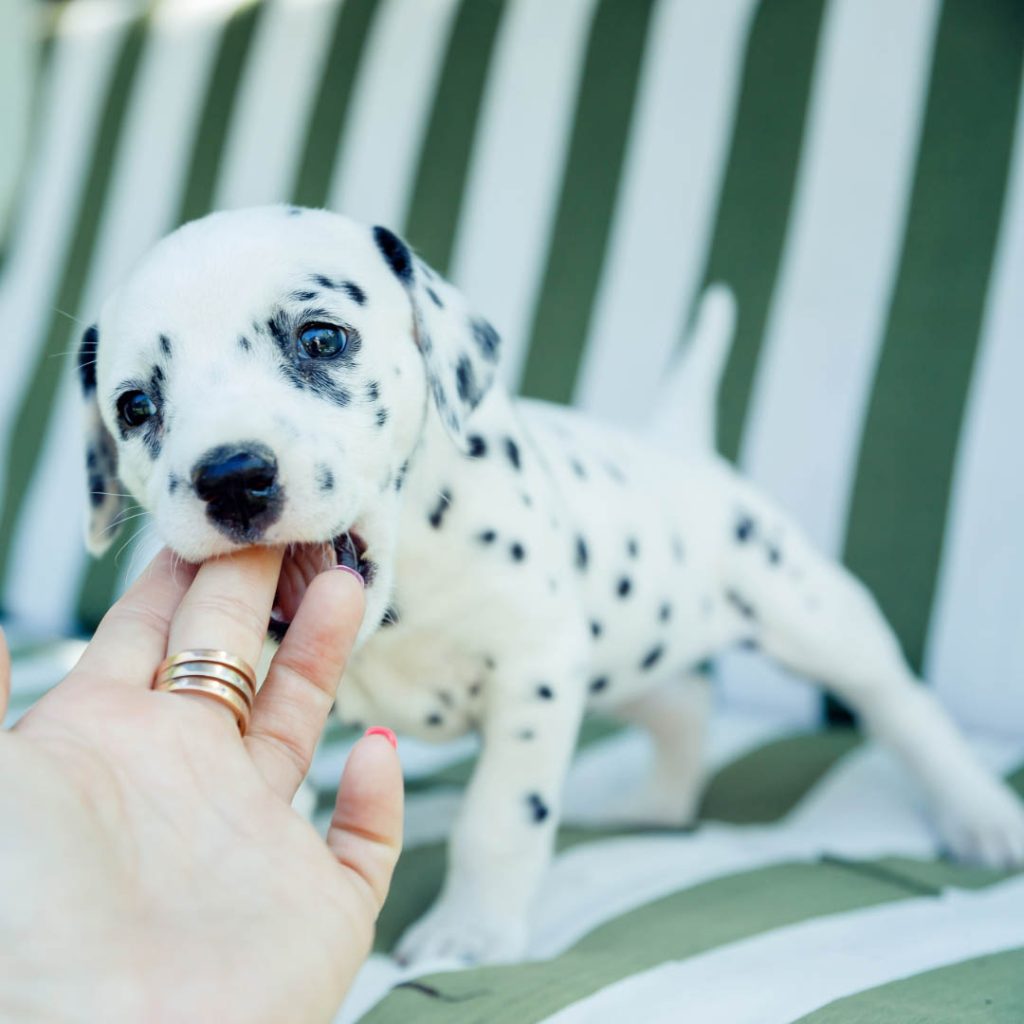
Step 2: Use the “Ouch” Technique
Puppies learn bite inhibition from their littermates. You can mimic this natural process.
When your puppy bites you:
- Let out a high-pitched “Ouch!”
- Immediately stop interacting (no talking, no eye contact).
- Wait a few seconds, then resume calmly.
Repeat consistently. This teaches your pup that biting = end of fun.
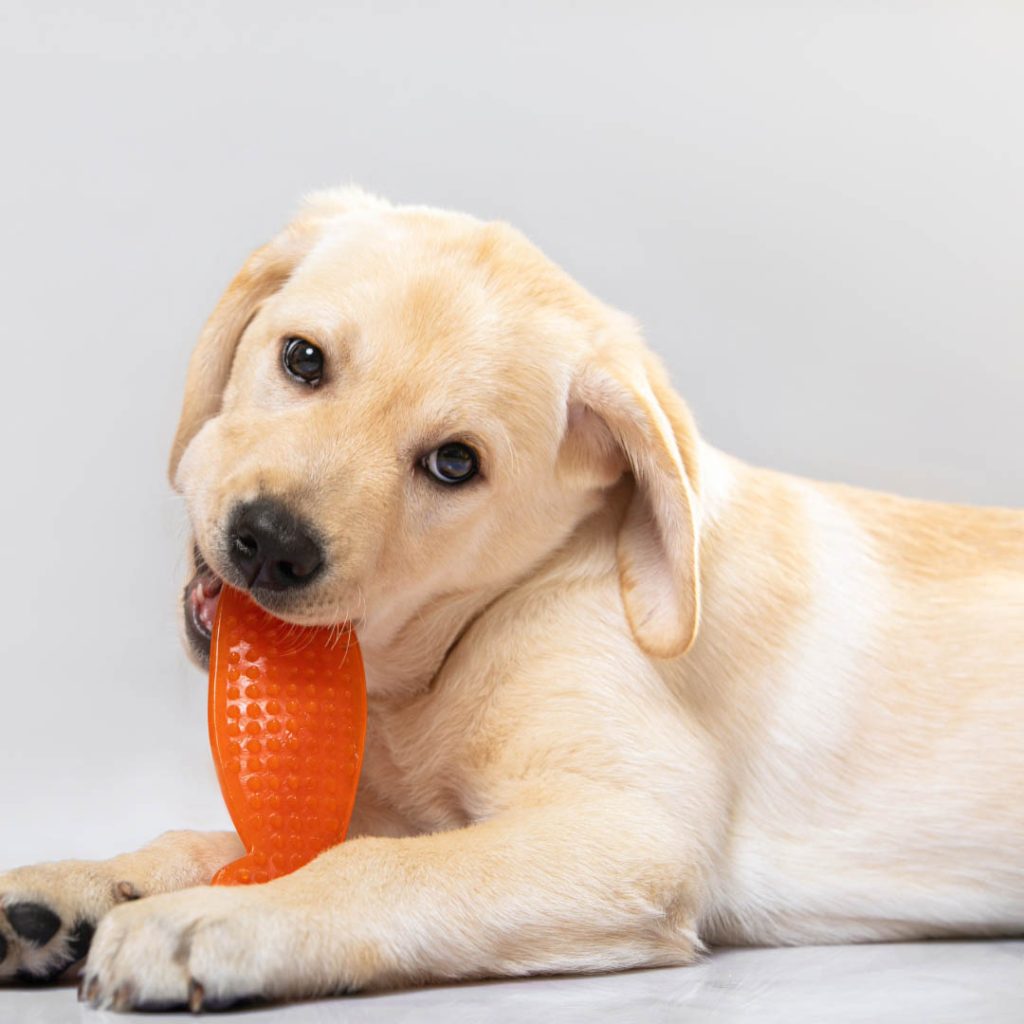
Step 3: Redirect the Biting
Don’t just say no—show your pup what to bite!
- Keep chew toys handy at all times.
- If they go for your hand, gently replace it with a toy.
- Praise enthusiastically when they chew the toy instead! 🎉
Pro tip: Use frozen teething toys for relief during the teething stage.
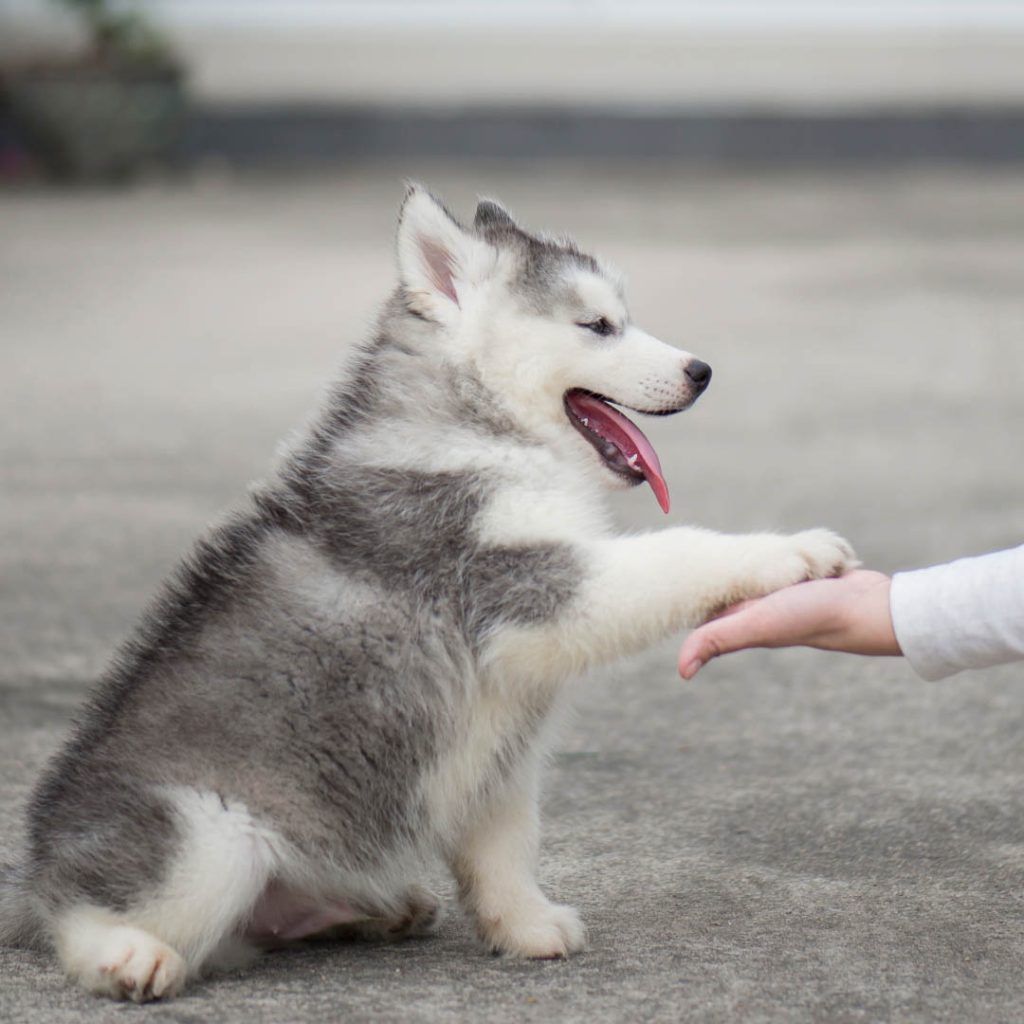
Step 4: Encourage Calm Play
If your pup gets nippy during playtime:
- Switch to low-arousal activities like games or training.
- Avoid rough play (e.g. hand wrestling) that encourages mouthy behaviour.
- Reinforce calm behaviour with treats or attention.
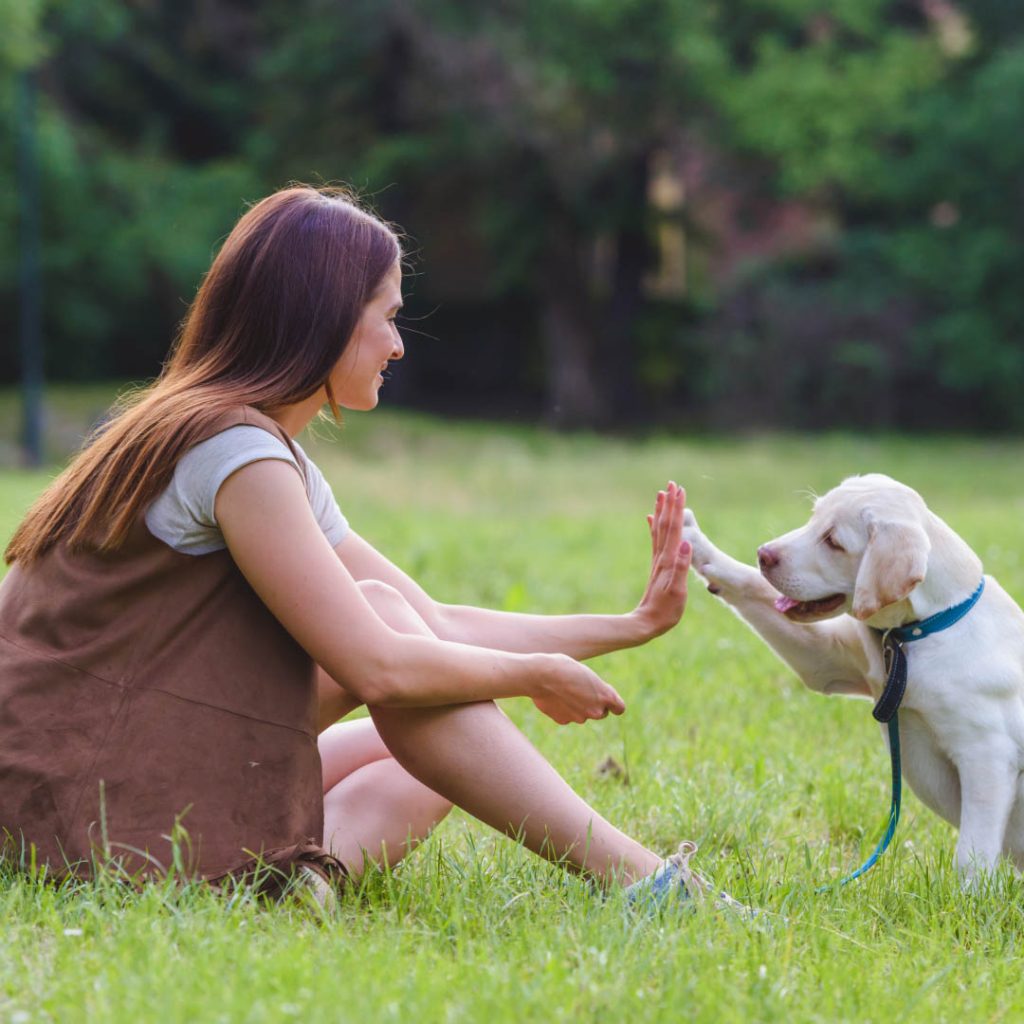
Step 5: Teach Basic Commands
Commands like “Sit,” “Leave it,” or “Gentle” help redirect behaviour and build impulse control.
- Short, positive training sessions help burn mental energy and reduce biting.
- Use food rewards or clicker training to keep it fun and consistent.
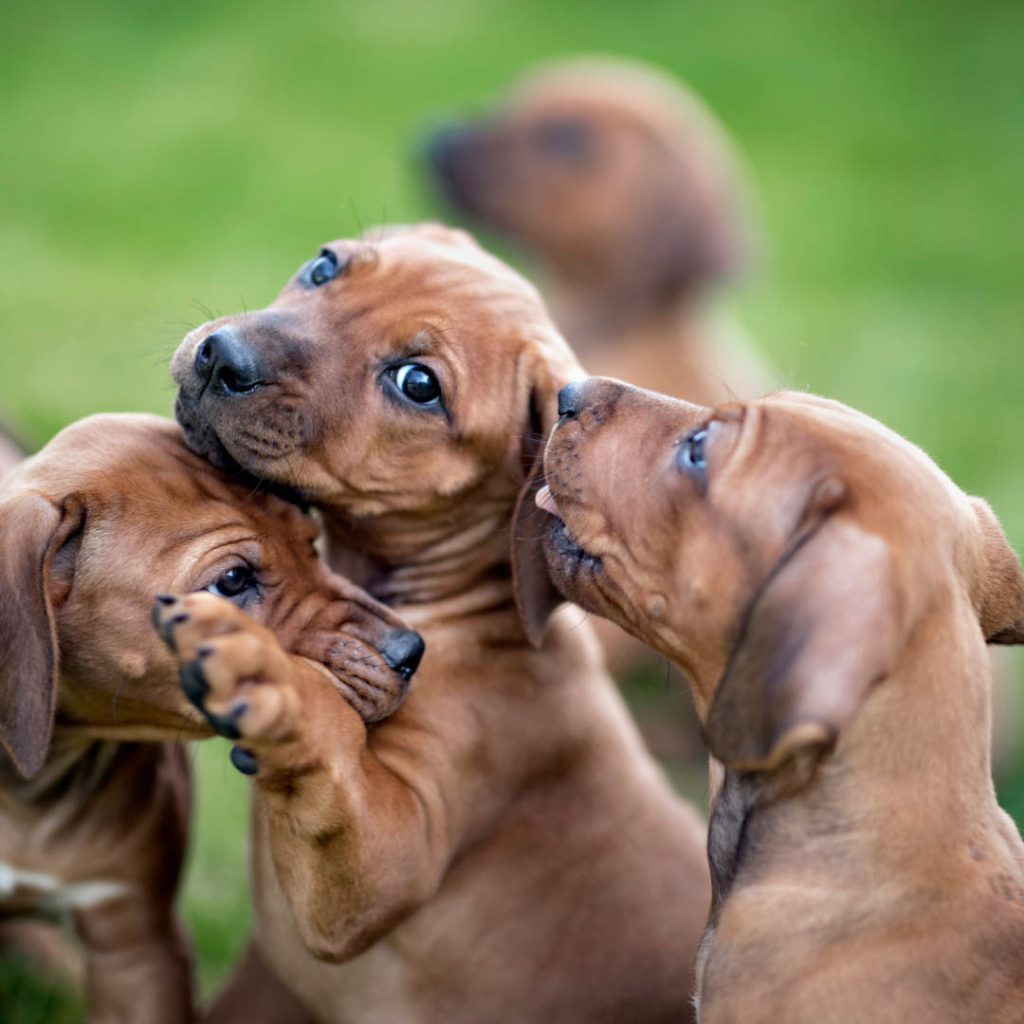
Step 6: Socialise, Safely
Exposing your puppy to other vaccinated dogs and puppies helps them learn bite control in a natural setting. Puppy preschools are excellent for this type of socialisation.
- Puppy preschool classes or controlled playdates are great.
- Supervise closely to prevent overly rough interactions.
Step 7: Don’t Punish—Redirect Instead
Avoid yelling, smacking, or holding your puppy’s mouth shut. These methods can create fear and worsen the behaviour. Positive reinforcement has been proven to be the best method of training for dogs of all ages.
Instead:
- Stay calm
- Be consistent
- Reward positive behaviour
- Gently correct unwanted actions
When to Seek Help
If your puppy’s biting is aggressive, persistent, or escalating. In that case, it may be time to consult a positive reinforcement-based dog trainer or your vet to rule out pain or underlying behavioural issues. With all behavioural problems, the sooner you seek help, the quicker the problem can be resolved before it becomes a well-engrained habit.
Puppy biting is completely normal—but it’s not something you want to ignore. With the right approach, patience, and love, your pup will soon learn that gentle mouths make for happy homes.
Nadia Crighton is a renowned and accomplished professional in the fields of Journalism, Public Relations, and Writing, with an extensive career spanning over 25 years, 20 of which have been dedicated to promoting the health and well-being of pets.
Get the latest Pet Insider Tips & News
We offer award-winning* pet insurance policies to protect your furry friend’s health and wellbeing. Get a quote today and give your pets the care they deserve.
Archives
Categories
- Cat Care (66)
- Cats (3)
- Dog Care (130)
- Guides (29)
- Health and Nutrition (203)
- Lifestyle and Activities (221)
- Media Release (38)
- Pet Care (255)
- Rescue Dogs (1)


